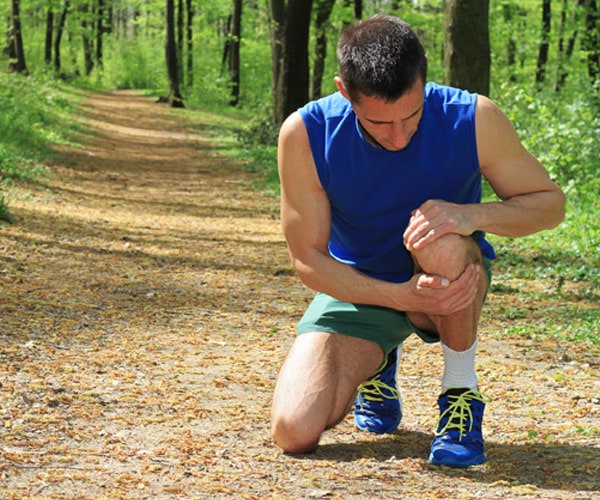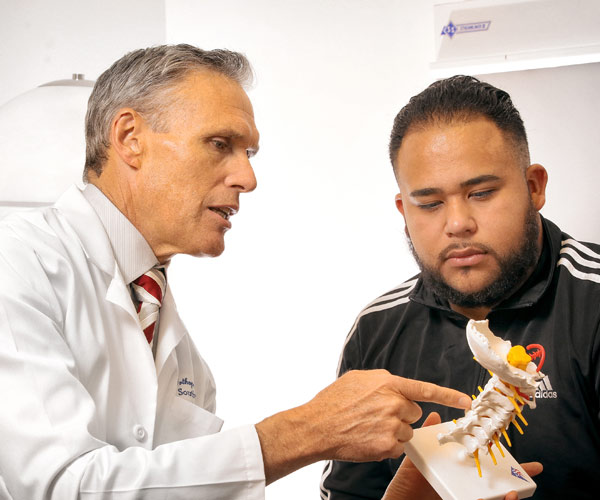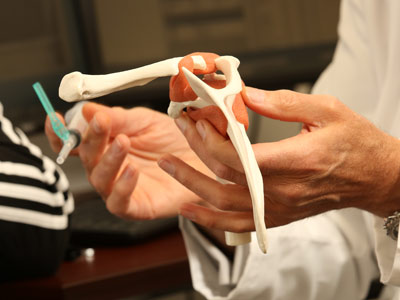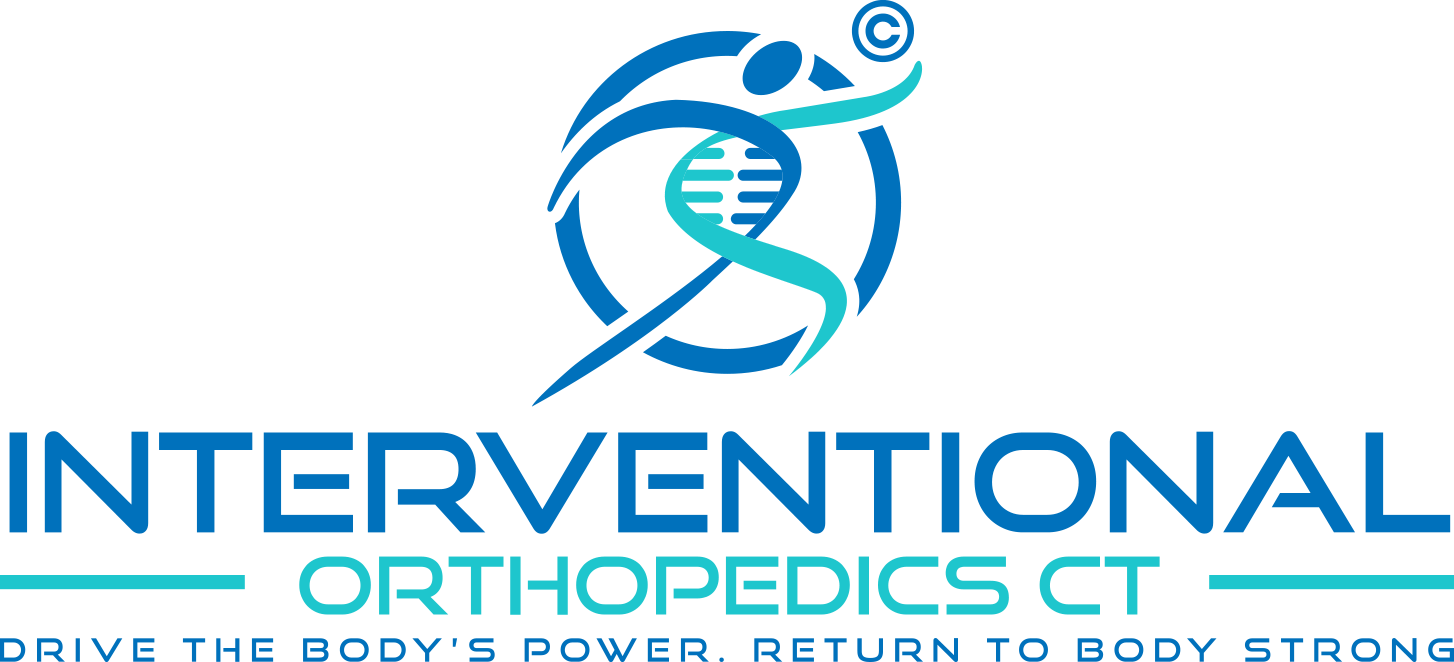Knee Pain
About Knee Pain
Knee pain is a common problem that affects people of all ages. Your risk of knee pain is increased if you are overweight and/or out of shape as this causes stress on the knee joints and hastens the “wearing out” of knee joint cartilage, leading to osteoarthritis. There are many sports that are particularly tough on knees such as downhill skiing, basketball, tennis, and the repetitive knee pounding experienced by running. Previous knee injury increases the risk for future injury and accelerates degenerative changes in the knee.

Symptoms of Knee Pain
Depending on the cause of your knee pain you might experience one or more symptoms that include stiffness, swelling, redness with a warm sensation to the touch, weakness and instability, “popping”, “grinding” or “crunching” sounds and a loss of the normal range of motion with an inability to fully straighten your knee.
Causes of Knee Pain
Common causes of knee pain include osteoarthritis and traumatic injury. Knee injuries can affect the large ‘cups’ of cartilage that cushion the knee or any of the ligaments or tendons that support the knee. An ACL injury is the tearing of the anterior cruciate ligament which is one of the four ligaments that connect your shinbone to your thighbone. An ACL injury is particularly common in people who play basketball, football, tennis, soccer or other sports that require sudden changes in direction. Other ligaments commonly injured include the medial and lateral collateral ligaments that stabilize the inside and the outside of you knee respectively. These are injured in hiking and contact sports including football, hockey, and rugby. Your meniscus is a tough rubbery cartilage that acts as a “shock absorber” between your shinbone and thighbone. It is possible to tear the meniscus if you twist suddenly while you are loading weight on your knee. A patellar tendinitis is an inflammation of the patellar tendon which connects the quadriceps muscle in the front of your thigh to the shinbone via the patella or ‘knee cap’. This is common in runners, skiers and cyclists as well as anyone participating in jumping sports such as high impact aerobics or plyometrics.
Non-Surgical Treatment for Knee Pain
Physical therapy and targeted strengthening and stretching exercises for the muscles around your knee help to make it more stable. Balance exercises for your core strength are also helpful as are strengthening the muscles of the buttocks. Quite important in reducing knee pain is correcting poor or suboptimal movement patterns along with developing proper technique for your chosen sports or athletic activities. For patients who do not respond to therapy, steroid injections with cortisone can help to control painful inflammation within the joint and temporarily restore somewhat normal function. Unfortunately, in the long run, steroids contribute to degenerative processes within the joint that result in the progression of osteoarthritis.
To learn more and get help for knee pain please Schedule an Appointment with Regenerative Orthopedic & Sports Medicine Specialist Daniel Southern, M.D. in Danbury or Wilton in Fairfield County Connecticut by calling 203-456-5717.


Surgical Treatment for Knee Pain
Arthroscopy – Arthroscopy is a procedure that uses a lighted scope and very small surgical instruments, including a fiber optic camera, to diagnose and repair knee problems through several tiny incisions around your knee. Arthroscopy may be used to remove loose bodies from your knee joint, remove damaged cartilage and reconstruct torn ligaments.
Partial Knee Replacement (Arthroplasty)-Partial Knee Replacement allows your surgeon to replace only the most damaged portion of your knee with parts made of metal and plastic. The surgery can usually be performed through small incisions, so you’re likely to heal more quickly than you are with surgery to replace your entire knee.
Total Knee Replacement (Arthroplasty)-Total Knee Replacement removes the native joint and replaces it with an artificial joint made of metal alloys, high-grade plastics and polymers. It usually is done when all other treatment options have failed to provide adequate pain relief and mobility, as joint replacement often has a long recovery and rehabilitation period.
To learn more and get help for knee pain please Schedule an Appointment with Regenerative Orthopedic & Sports Medicine Specialist Daniel Southern, M.D. in Danbury or Wilton in Fairfield County Connecticut by calling 203-456-5717.
Regenerative Orthopedic Medicine Treatment for Knee Pain
Regenerative procedures provide non-surgical treatment options for those suffering from pain related to osteoarthritis, joint injuries, spine pain, overuse conditions, and common sports injuries. These medical procedures are performed by highly-skilled doctors and are used to help reduce pain and improve function. They may help improve your quality of life, return to the activities you enjoy, and avoid the need for surgery or joint replacement*.
*DISCLAIMER: Like all medical procedures, regenerative procedures have a success and failure rate. Patient reviews and testimonials on this site should not be interpreted as a statement on the effectiveness of our treatments for anyone else.

